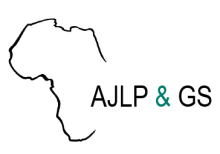Resource information
Context and background:Forest ecosystems have the capacity to regulate the climate as sink of carbon. This function allows them to maintain the ecological balance of the planet. Given the intensity of the ever-increasing human pressures on these ecosystems, it is urgent to quantify and spatialize their carbon storage potential in time and space in order to implement more appropriate environmental management practices and policies.Goal and objectives:The present study, which focused on the structure of woodland formations and carbon modeling of the Classified Forest of Missahohoé (CFM), intends to contribute to the sustainable management of protected areas in Togo. More specifically, it aims to: (i) determine the vegetation structure of the FCM and (ii) model the carbon in the MCF.Methodology:The methodology consisted on forest mensuration within 27 plots sized 50 m x 20 m. Dendrometric data were used to characterized the structure of the woodland formations, to estimate biomass and carbon stocks. The InVEST and MOLUSCE models combined with Landsat images was used to predict carbon sequestration for the year 2035 based on observed changes in this forest ecosystem.Results:The results of the diameter class structure reveal that these woodlands are dominated by young tree reflecting strong anthropogenic pressure namely shifting fields and illegally extraction of firewood. Between 2020 and 2035, for the whole target classified forest, a gain of 627.75 Mg of carbon is predicted. On the other hand, at the level of land use units, riparian/dense forests and tree/shrub savannahs will experience a carbon loss of -9.21% and -1.61% respectively. The economic value of the total carbon that would be sequestered in 2035 by the FCM is estimated at $3,197,148.85. The total loss of ecosystem service value in the two land use units from 2020 to 2035 would be $58,851.98. This study recommends restoration/reforestation as the most practical strategy for mitigating carbon loss and calls for increased access to renewable energy sources for local communities.


